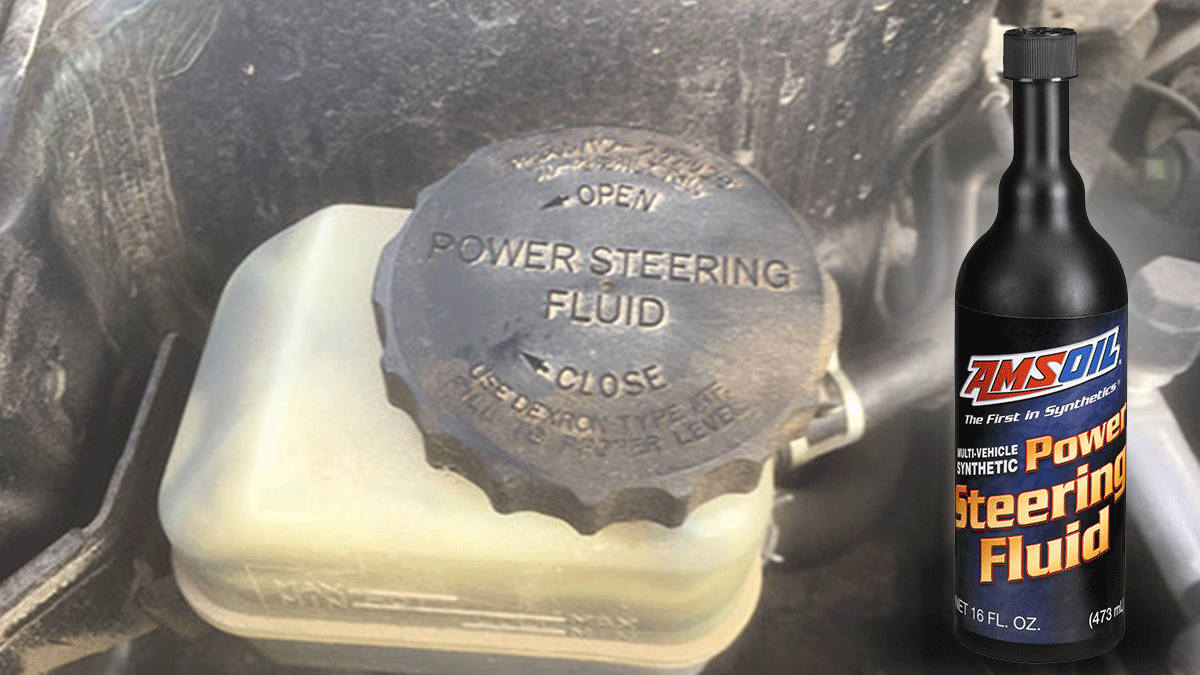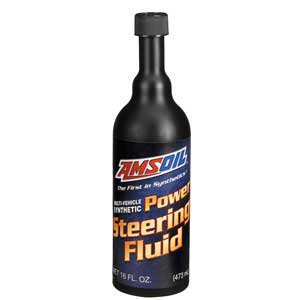Checking power steering fluid is a simple task anyone can do. Yet, it’s often overlooked until the signs of low power steering fluid emerge, such as the pump whining and making noise. In this post, we’ll explain how to check power steering fluid and how to change it.
First, check your owner’s manual for recommendations on how often to check power steering fluid.
Since it’s so simple, I generally check power steering fluid anytime I check my oil level or before long trips.
Step-By-Step: How To Check Power Steering Fluid
1. Locate the Power Steering Fluid Reservoir
Its location differs for every vehicle. It’s usually a small, clear container with a black cap. Many vehicles have marks on the outside of the reservoir to indicate “MAX” or “MIN.” Ensure the fluid level is above the “MIN” mark but not overfilled.
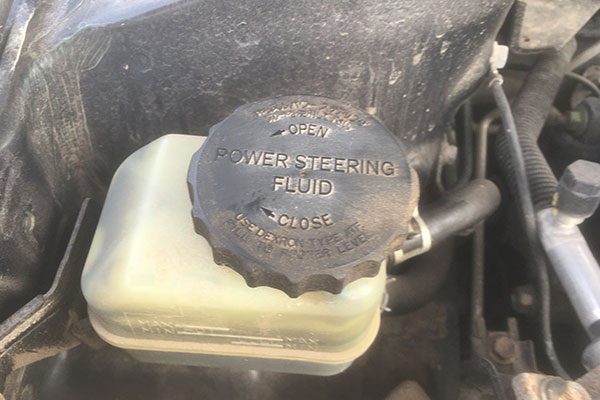
2. Check Dipstick (If Equipped)
Other vehicles have marks on the dipstick, similar to an oil dipstick. In this case, remove the cap and wipe the dipstick clean. Reinstall the cap, ensuring it’s completely seated.
3. Remove Cap Again And Check Fluid Level
Ensure it’s at the appropriate level. You may see marks for “full hot” and “full cold,” so ensure you’re referencing the correct mark depending on whether the engine is hot or cold.
4. Add Power Steering Fluid
Top-off the reservoir if needed to fill to the appropriate level.
When Do I Change Power Steering Fluid?
Check the owner’s manual for recommendations on how often to change power steering fluid.
However, if it’s been a while (like, never) and the fluid appears dark and dirty, go ahead and change it.
This image shows the dramatic difference between old and new power steering fluid.
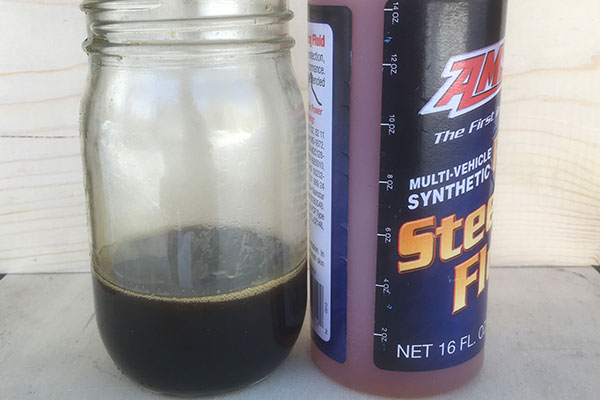
Like any other lubricant, power steering fluid accumulates wear material, moisture and other debris. The fluid also wears out due to oxidation. Worn out power steering fluid can cause the pump to whine and make noise.
It’s a good idea to change power steering fluid before you end up replacing the pump, which is far more expensive.
How Do I Change Power Steering Fluid?
The process differs depending on your vehicle. Check your owner’s manual or a service manual for instructions specific to your car or truck.
In general, though, most power-steering systems have the same configuration.
A high-pressure hose carries fluid from the power-steering pump to the steering rack. A low-pressure hose returns the fluid back to the reservoir. The cycle repeats as the engine is running.
Flushing The Power Steering System
Completely flushing the power steering system requires some technical know-how and can be a mess. It’s also helpful to have a helper on hand.
- Disconnect the low-pressure return hose and direct it into a bucket or drain pan. You probably will need a length of hose to reach the pan.
- Then, have someone start the engine and turn the steering wheel as far as it goes in both directions. This will pump old fluid into the drain pan.
- To prevent air from entering the system, have a helper near the reservoir with a couple bottles of new power steering fluid. Add fluid as needed to prevent the reservoir from running dry.
- Once your helper sees new fluid draining into the pan, shut off the engine and reconnect the hose.
Avoid allowing air into the system so you don’t have to bleed it.
An Easier Way To Change Power Steering Fluid
While flushing the system completely is best, you’ll inevitably run into hurdles.
- Rust on the hose clamps will likely prevent removal without breaking them.
- The hose you’ll need to disconnect to drain the system will inevitably be buried at the bottom of the engine bay; you may need to recruit Plastic Man to reach it.
- And, of course, you’ll likely mess up your garage floor with power steering fluid.
The “Poor Man’s” Power Steering Flush
While this procedure won’t remove all the old fluid, like flushing the system will, it will remove most of it. And it’s much easier and cleaner.
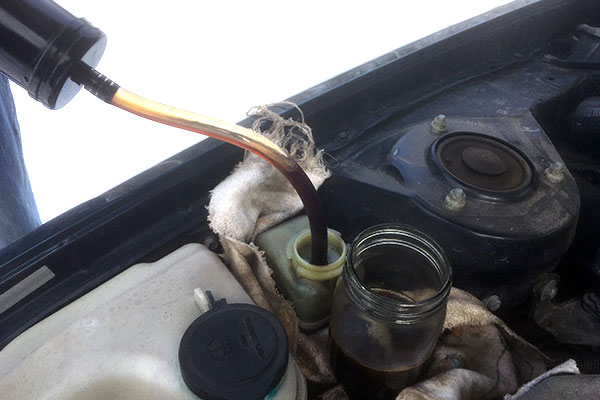
- Place some rags around the fluid reservoir and place a catch can nearby.
- Using a fluid extraction pump or turkey baster, remove the old fluid and empty it into the catch can. Leave enough fluid in the reservoir to cover the hose inlets. This prevents air from entering the system.
- Add new fluid to the reservoir and run the engine. Turn the wheel from side to side as far as it goes a few times.
- Turn off the engine and repeat the first three steps until the fluid is clean.
You can also drive as normal for a day or two and repeat until you’ve cycled most of the old fluid through the system.
This simple procedure removes much of the old fluid quickly and easily. I’ve performed it on a couple different vehicles with good results.
